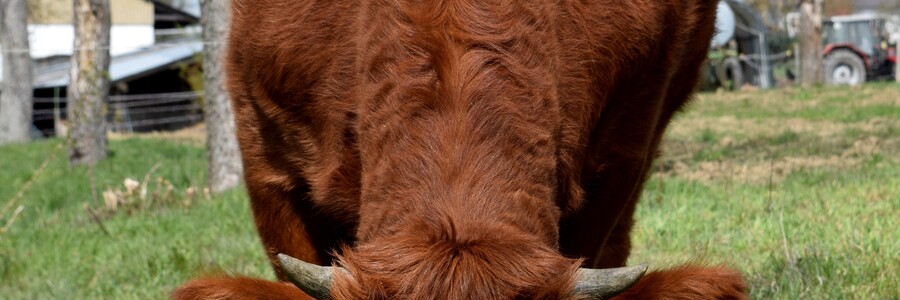Since we have been the happy owners of a small herd of cows since December 2020, we want to take a closer look at these beautiful animals. Because we also asked ourselves: What exactly does the term cow mean? And can cows see colours? These and many other questions will be answered here.
Is every cow a cattle? And what are calves and oxen?
The term cattle serves as an umbrella term for all cattle, including all types of cow, ox and calf. Colloquially, however, cow is often used instead of cattle, although ox, calf or cow were meant. Ox, cow and calf depend on the age and sex of the cow. Up to the seventh month, the cow is called a calf, after that it is considered a young cow up to the twelfth month. Here the sex does not matter.
When a female calf grows older but has not yet had any offspring, she is called a heifer. Only after giving birth does a heifer become a cow. Accordingly, only the cow can give milk.
Young male cattle are called young bulls, after that only bulls. If a bull is castrated, it is called a steer.
Young and dynamic
The natural lifespan of a cow is about 20, sometimes even up to 25 years. The approximate age of a cow can be determined by the teeth as well as by the number of horn rings. While the dentition is completed with the complete loss of the milk teeth after about 5 years, the first horn ring appears at 2 1/2 to 3 years, depending on the occupancy and breed. After that, another ring appears every year.
Cuddly and loving
This is how you can describe our herd of cows. Because cows are social animals that can recognise up to 70 of their fellow cows. They form close friendships with others within their herd and strengthen their relationships by licking each other, which also has a relaxing effect on the cows.
Drink like the world champions
Humans should drink about 3 litres a day. This is nothing compared to cows, who drink a whole bathtub full of water every day. In most cases, a single fluffy ruminant can drink up to 60 litres a day.
Stair chaos
Did you know? Cows can climb stairs - but only upwards, they can't get down. This is due to their physique, because they cannot bend their front legs..
Our orchards - colourful and beautiful
From the point of view of our cow herd, not quite, as cows only have receptors for the colour green and blue. The colour red is hardly or not at all recognisable to them.
In tranquillity lies strength!
This is also the motto of our cows, because cows love to rest. That's why they lie down about five to ten times a day and rest for up to 12 hours in total. So moving to a new pasture is always particularly exciting for our cows.
Would you like to get to know our cows better? Then take a look at our idea of holistic pasture management to learn more about the cow herd and its function.

